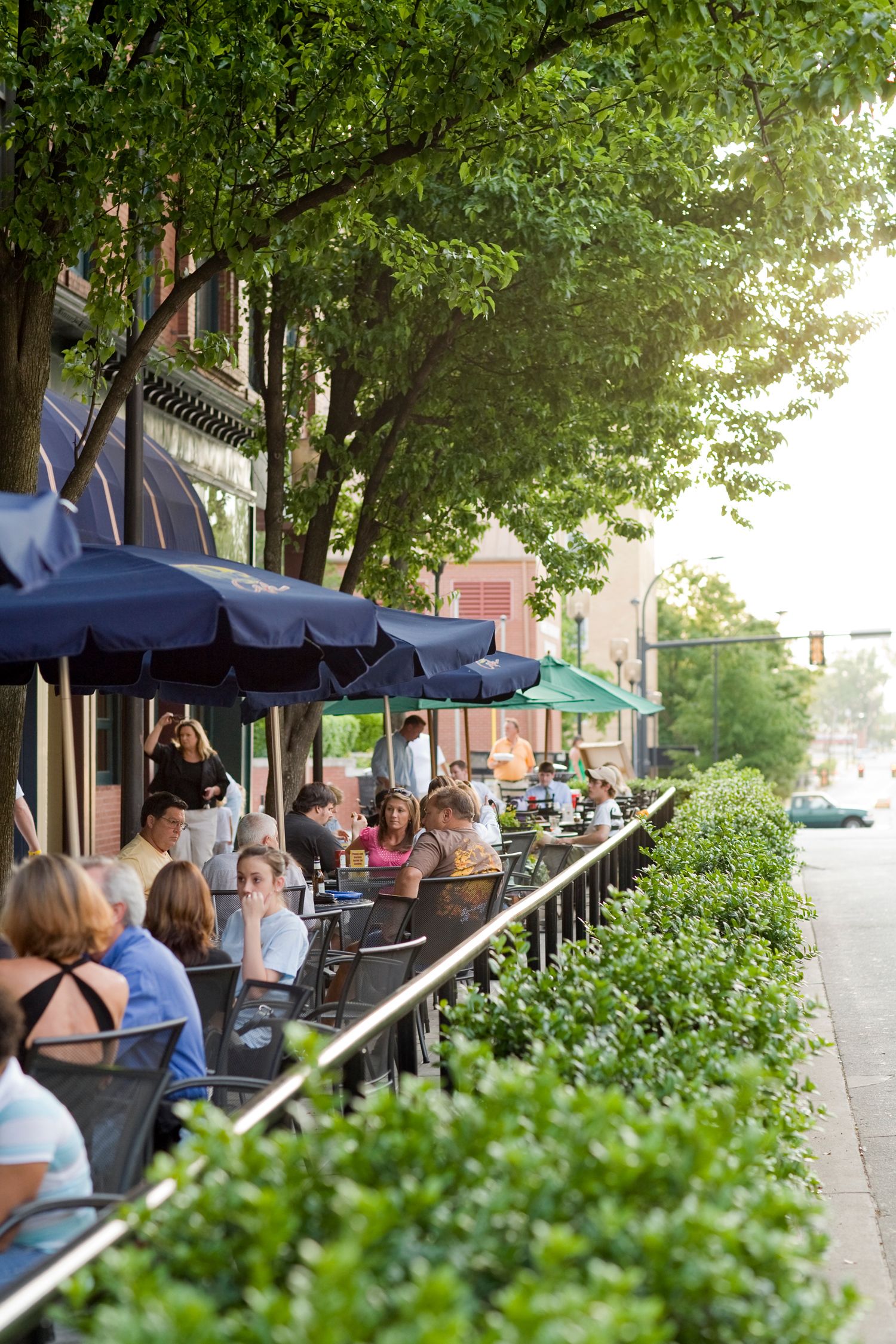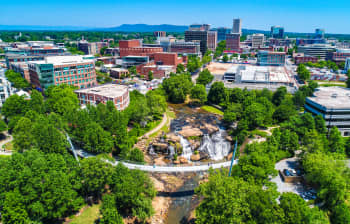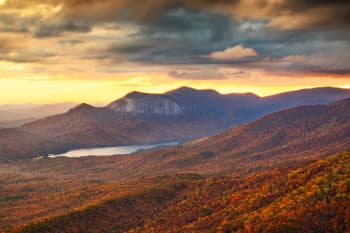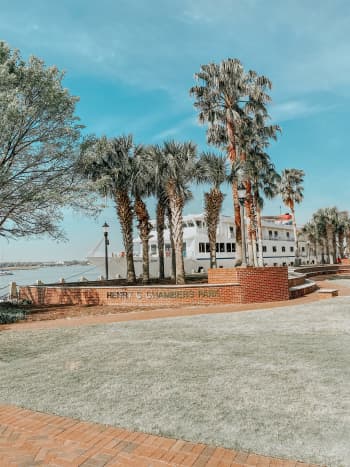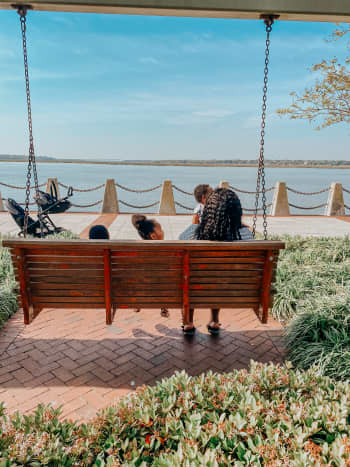Discover the road less travelled in South Carolina
Beyond beautiful Charleston and Myrtle Beach, explore lesser-known South Carolina’s charms, adventures and bright sunshine
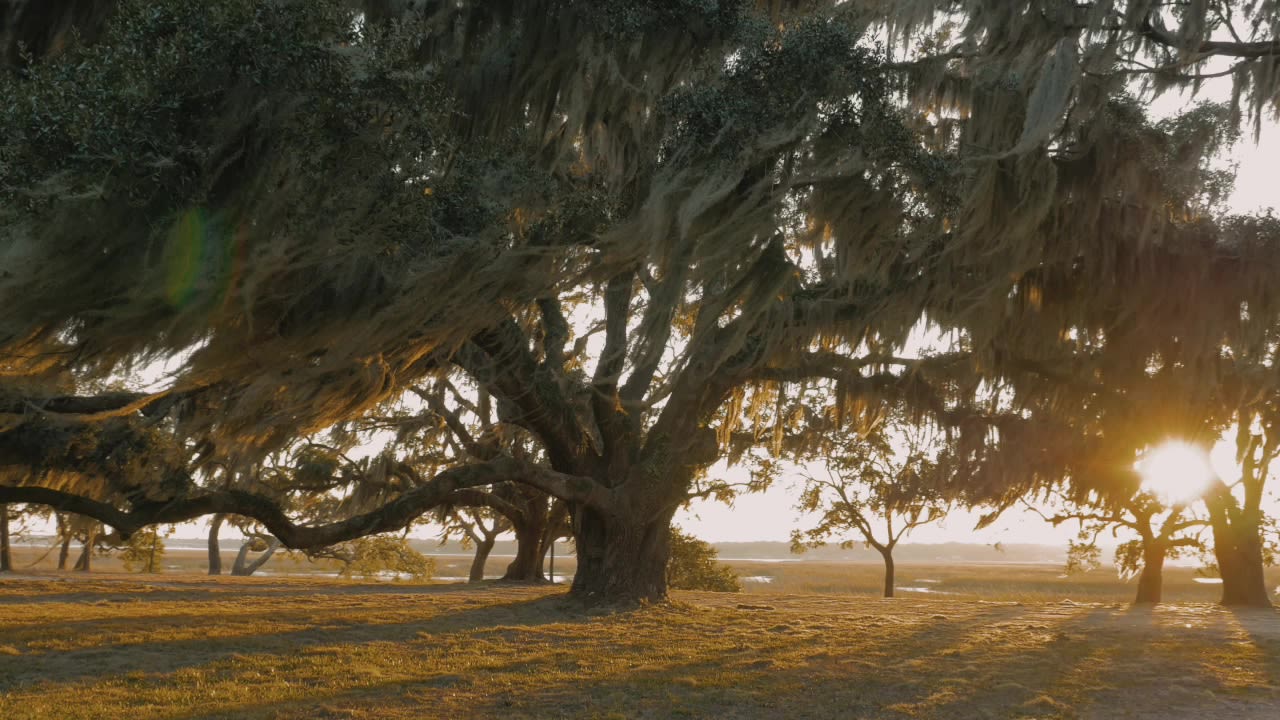
Sandwiched between North Carolina and Georgia, South Carolina is best known for its historic coastal cities named after long-deceased colonial kings, such as Georgetown and Charleston. But from the Appalachian foothills to the marshland-fringed Atlantic, South Carolina is one of the country's most rural states.
Intrepid travellers soon discover far more than the salt-kissed Lowcountry, with the Upcountry’s cultured cities, National Monuments, and forest preserves laying bare the state's storied past and subtle natural beauty in equal measure.
A perfect mix, then, for a pleasantly paced getaway to experience, among other things, Greenville’s outdoors adventure and creative Southern cuisine, Columbia’s plucky history, and Beaufort’s unique Gullah culture.
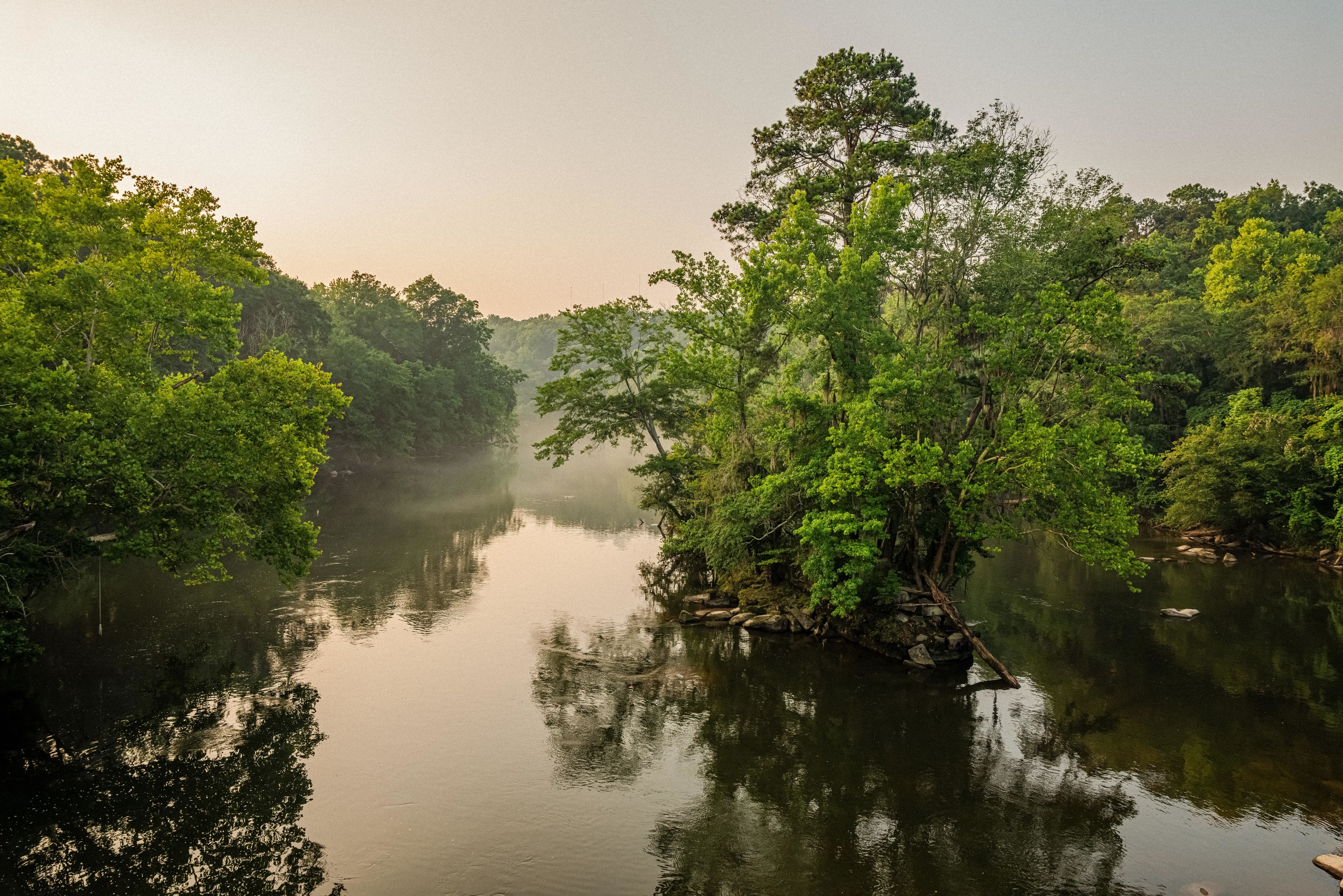
Get to know Greenville
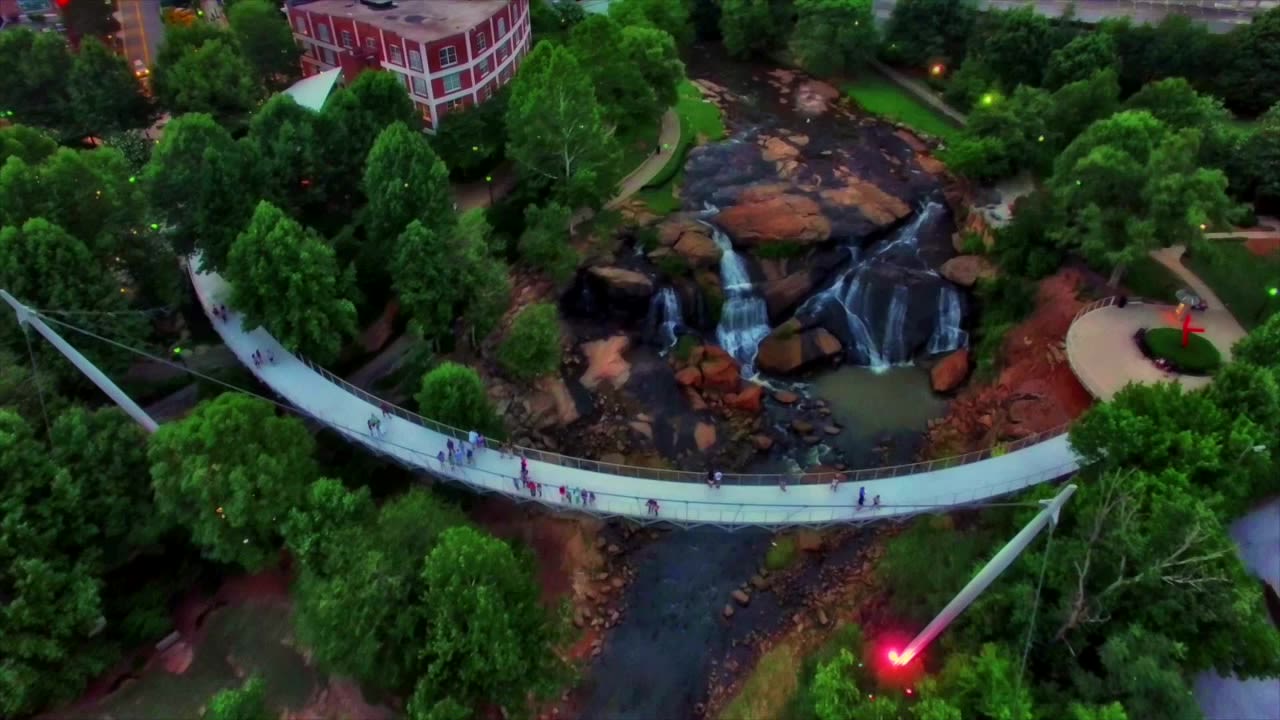
Nowhere extolls the virtues of South Carolina better than Greenville. This gentle, leafy city (Greenville really is an appropriate name) is often overlooked by visitors to the state. But those in the know keep coming back for the city’s cheerful welcome, ubiquitous natural beauty, and rapidly growing dining scene.
Greenville’s metropolitan area is the largest in South Carolina, but you’d hardly realise it for all the opportunities to access the great outdoors. The city centre is built around a set of waterfalls, which are framed by the bucolic Falls Park on the Reedy. The park’s Liberty Bridge pedestrian walkway is the best vantage point from which to appreciate both the city and riverscape.
At the park’s southwestern end lies Fluor Field, home of the Greenville Drive, the city’s Minor League Baseball heroes who brought home the South Atlantic League Championship title in 2023.
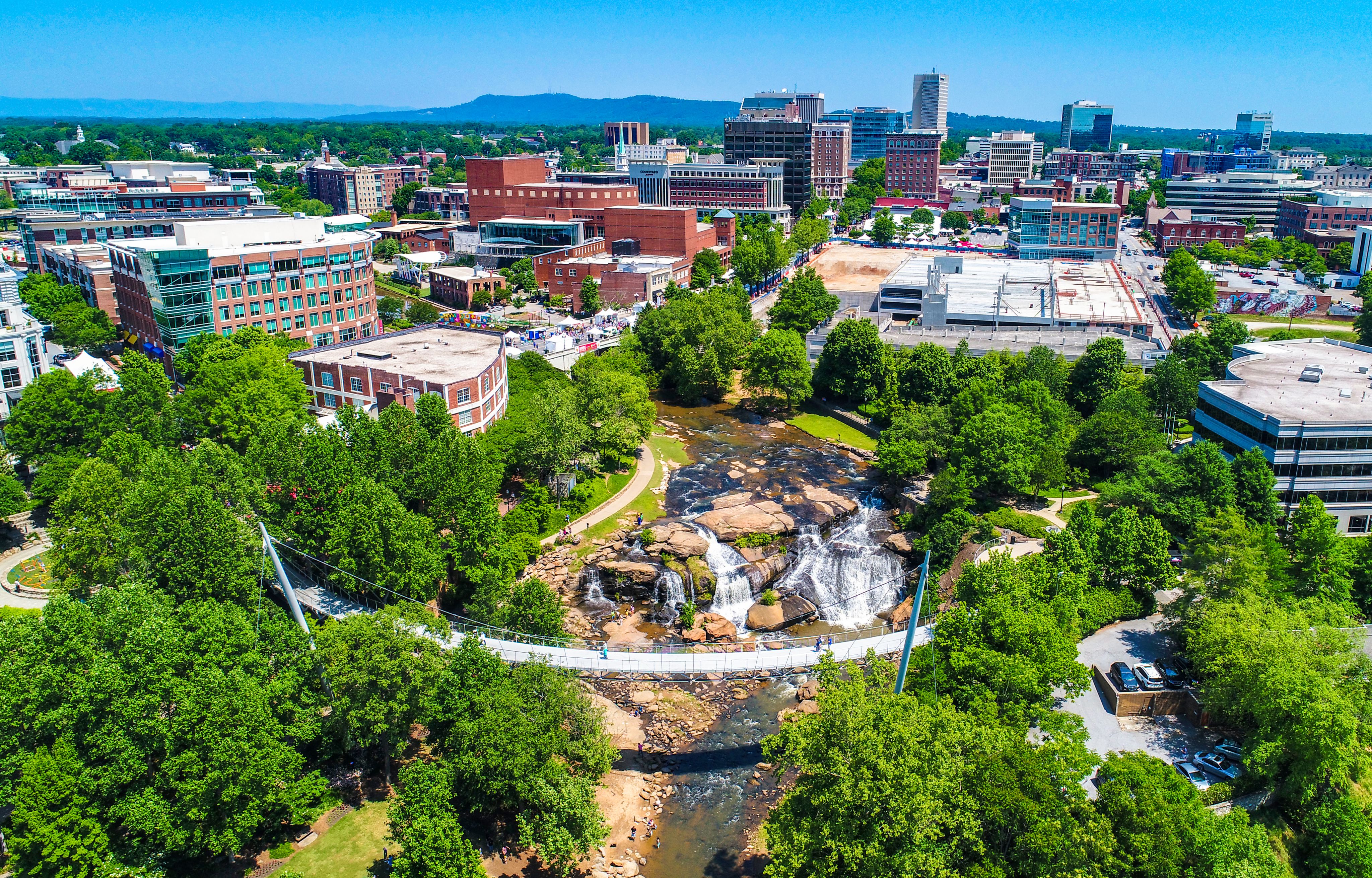
As South Carolina’s gateway to the Appalachian Mountains, Greenville is the ideal base for exploring the wild trails of the foothills. Fernwood and Swamp Rabbit nature trails are both accessible by foot (or wheel using the green and white Greenville BCycle share bikes) from Downtown, while Paris Mountain State Park looms above the city on its northern edge. Further afield, the Table Rock Trail and Issaqueena Falls Trail are two of the best hikes in the state. Both lie within an hour’s drive of Greenville.
However, you don’t need to leave the city to connect with the wider region. The Upcountry History Museum delves into the region’s past, including Greenville’s own stint as a major textile producing centre. Nearby, Upcountry culture takes centre stage at Greenville Theatre and at the Greenville County Museum of Art, where visitors get free admission to the excellent galleries of Southern Art and American Impressionism. The collection includes pieces by Georgia O’Keeffe, Andy Warhol and Jasper Johns.
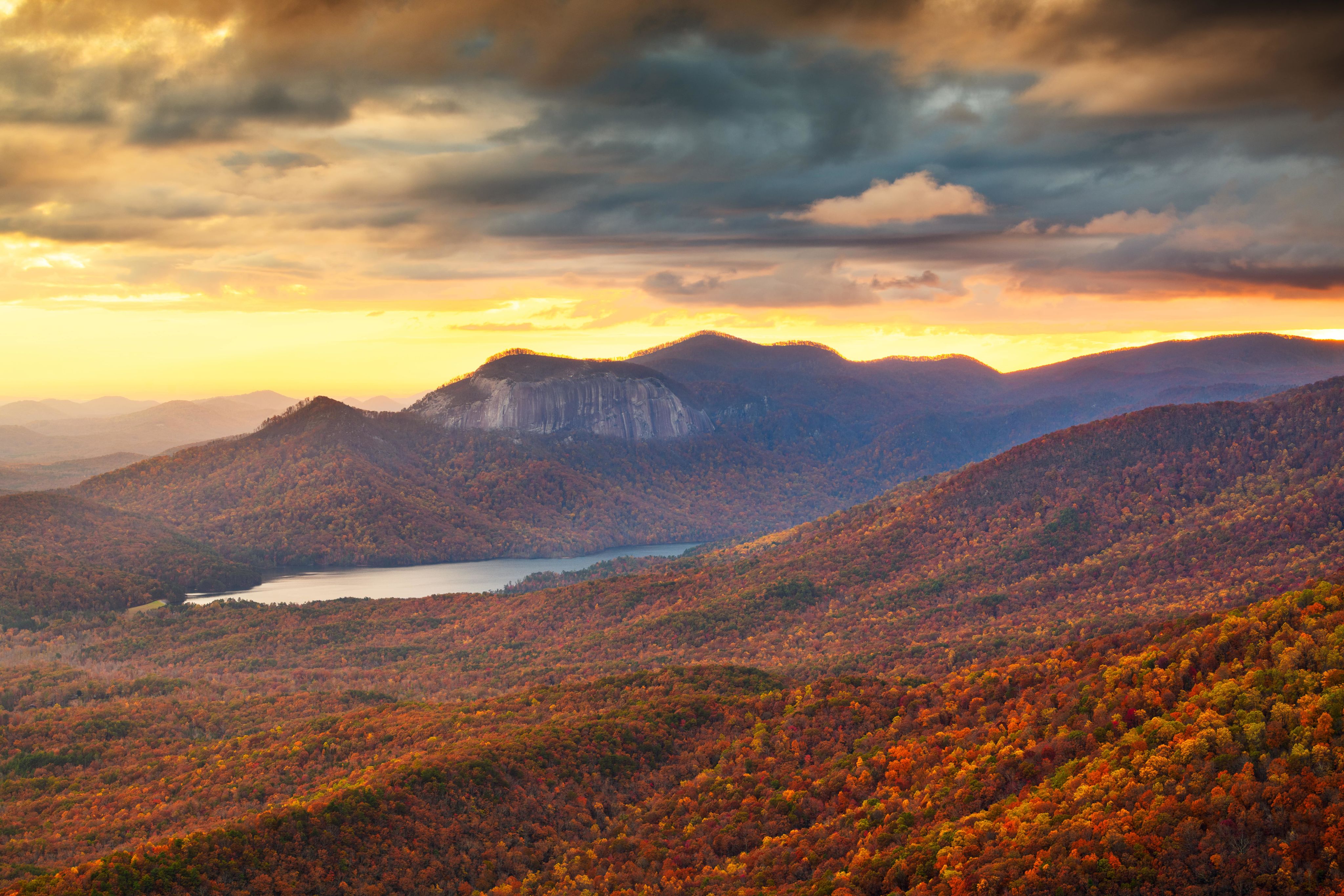
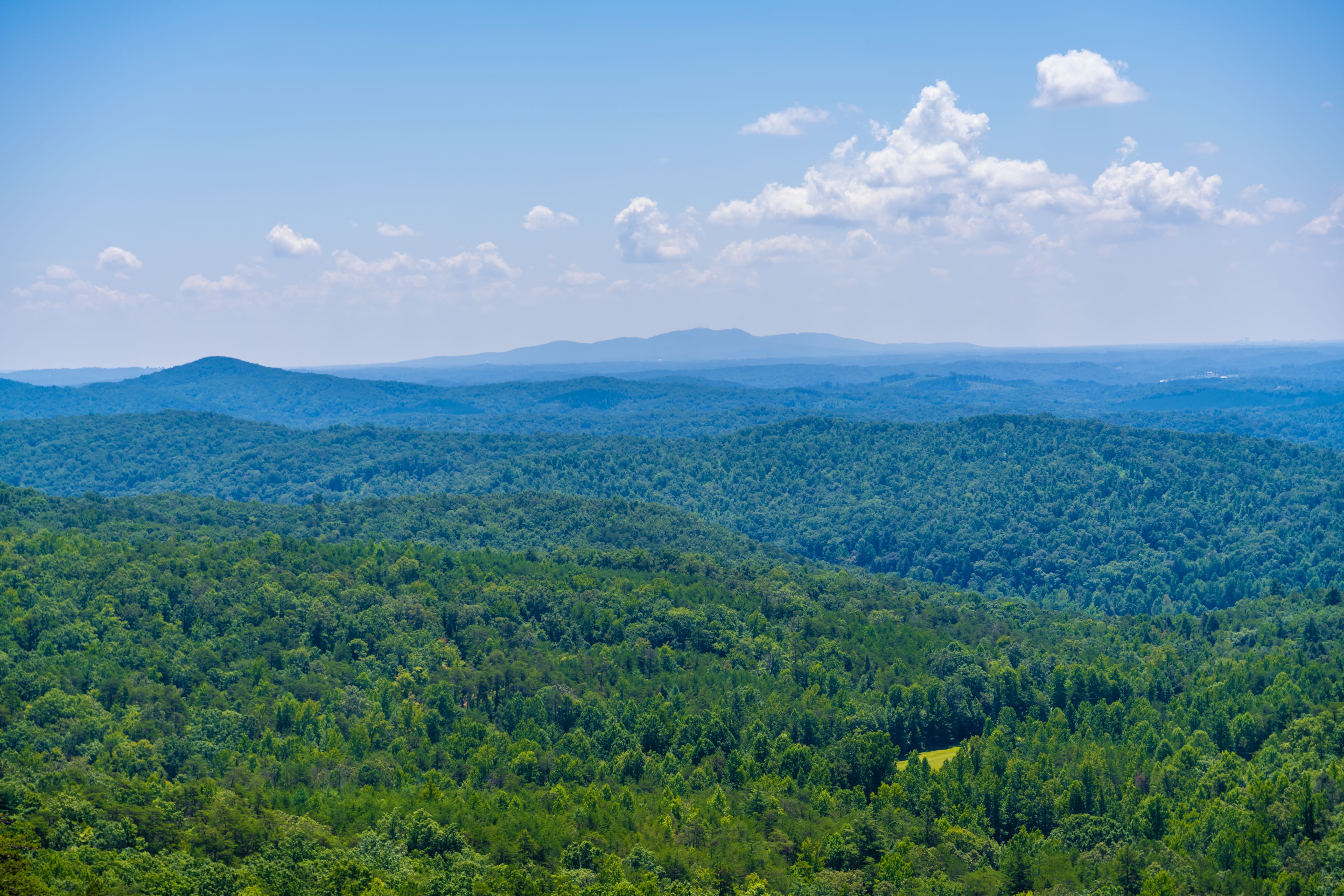
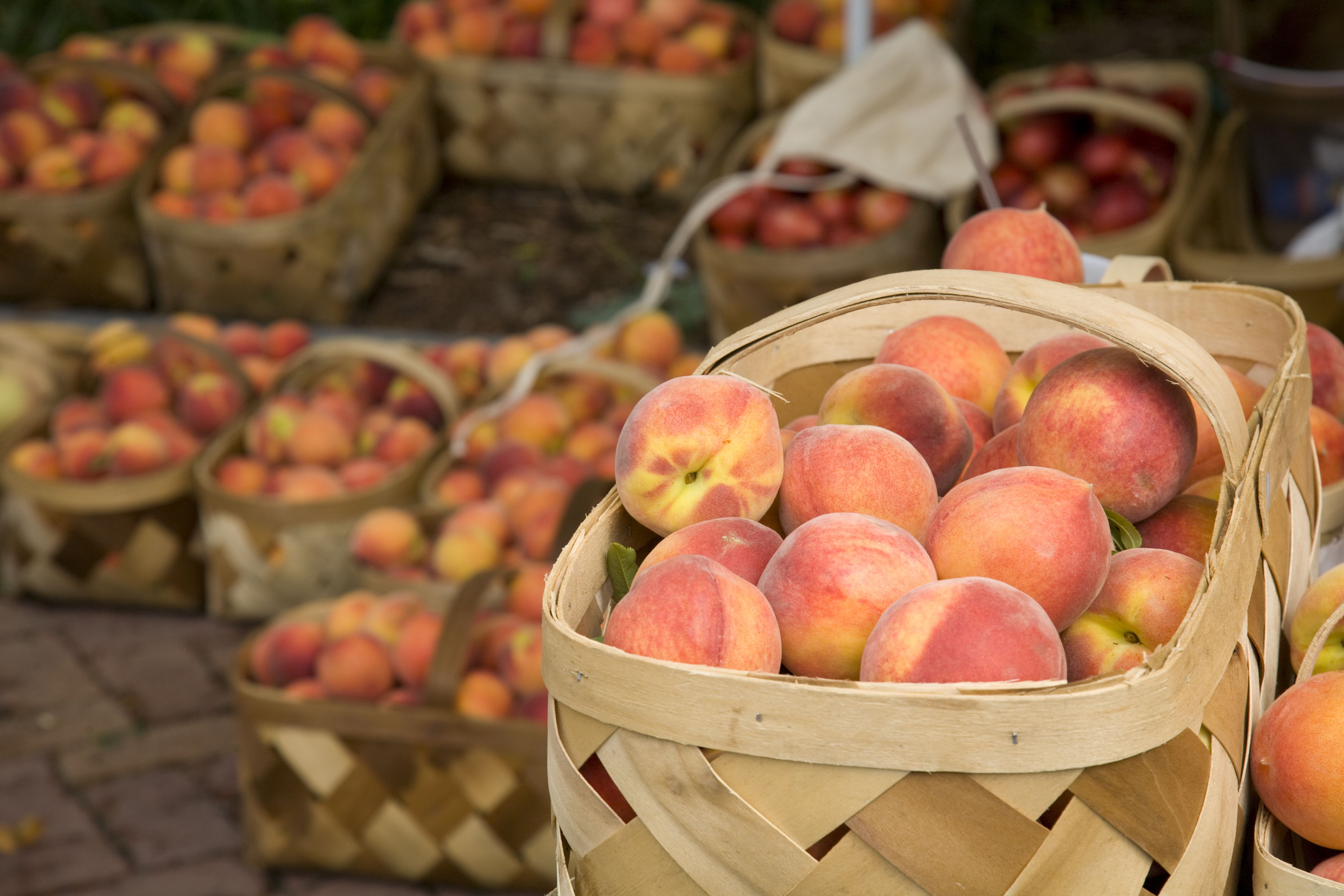
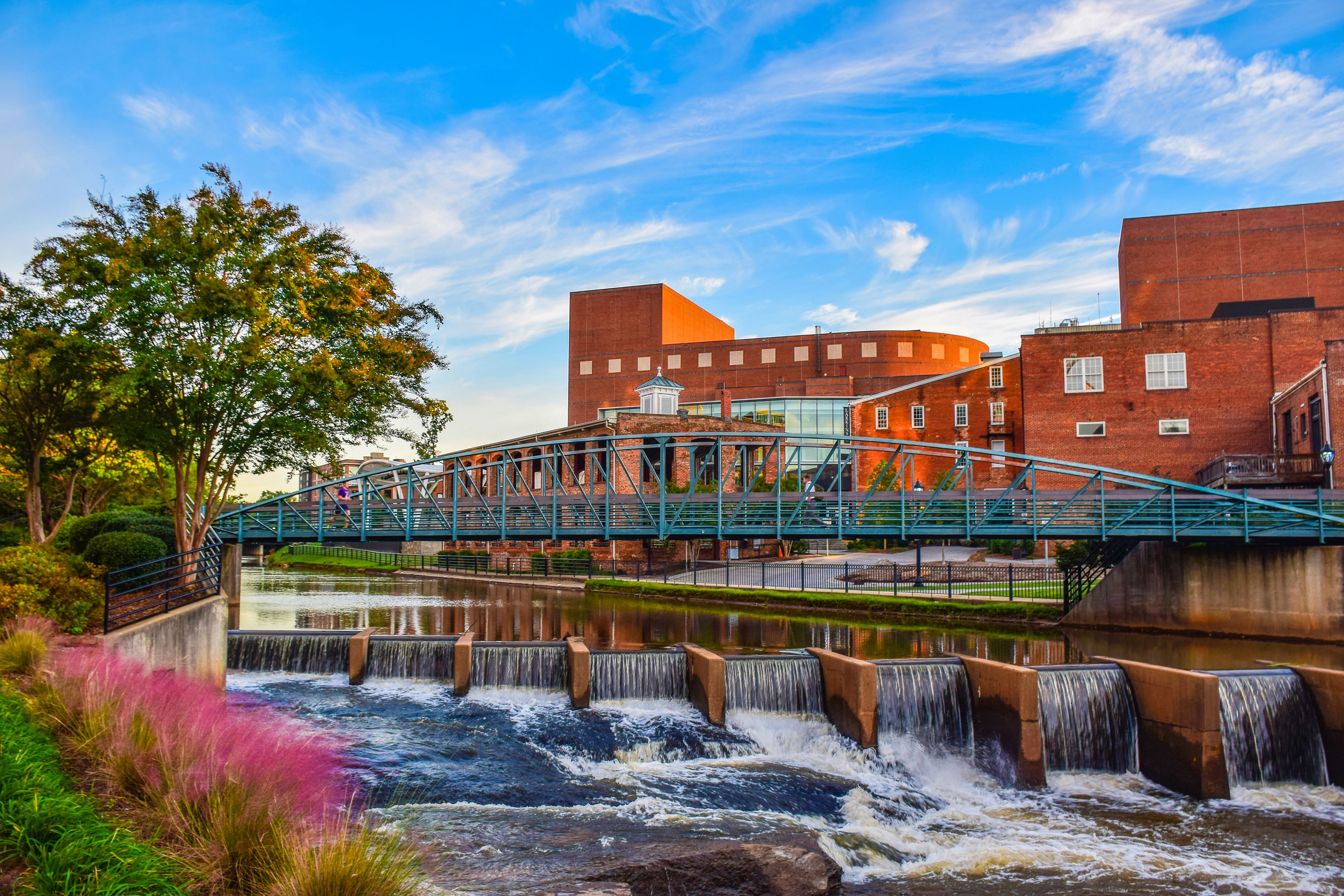
Ripe for road tripping
While in Greenville, meander along the Cherokee Foothills Scenic Highway 11 to take in South Carolina’s natural beauty. Picturesque at any time of year, this route is particularly dazzling in the autumn when littered with the Fall foliage’s ochre and terracotta shades.
There are plenty of charming stops recommended along the way, including the gushing waterfalls and handful of state parks to soak up. Non-negotiable pit stops include the Table Rock Tea Company for a warming brew, Stumphouse Tunnel & Mountain Bike Park for its exhilarating trails and Macgregor’s Orchard for refreshing, locally grown produce. For a refuelling bite to eat, stop in Travelers Rest and head to Topsoil Kitchen & Market.
Where to eat
Greenville is fast developing a reputation as a nascent hub of Southern cuisine. Among the iconic must-try dishes are the pimento cheese biscuits at Biscuit Head, sweet potato cake at Brick Street Café, and shrimp and grits at Soby’s. For all your caffeine needs, try Methodical Coffee.
Greenville also has a lively brewing scene, with taprooms throughout the city, including Southernside Brewing Co. and Fireforge Crafted Beer.
And if you’ve got access to your own transportation, hop on the I-85 headed northeast where you’ll come across peach country, centred on Gaffney, 80km away, whose 41m water tower is shaped and painted like a giant peach. Naturally, it’s called the Peachoid. Abbott Farms makes practically anything with peaches from preserves to peach cider.
Where to stay
The opening of two major new hotels is proof that Greenville is starting to draw real outside interest: The Grand Bohemian Lodge Greenville is in the Falls Park on the Reedy, overlooking the waterfalls. Hotel Hartness is set in a beautiful, whitewashed country estate.
Immerse in culture and conservation in Columbia
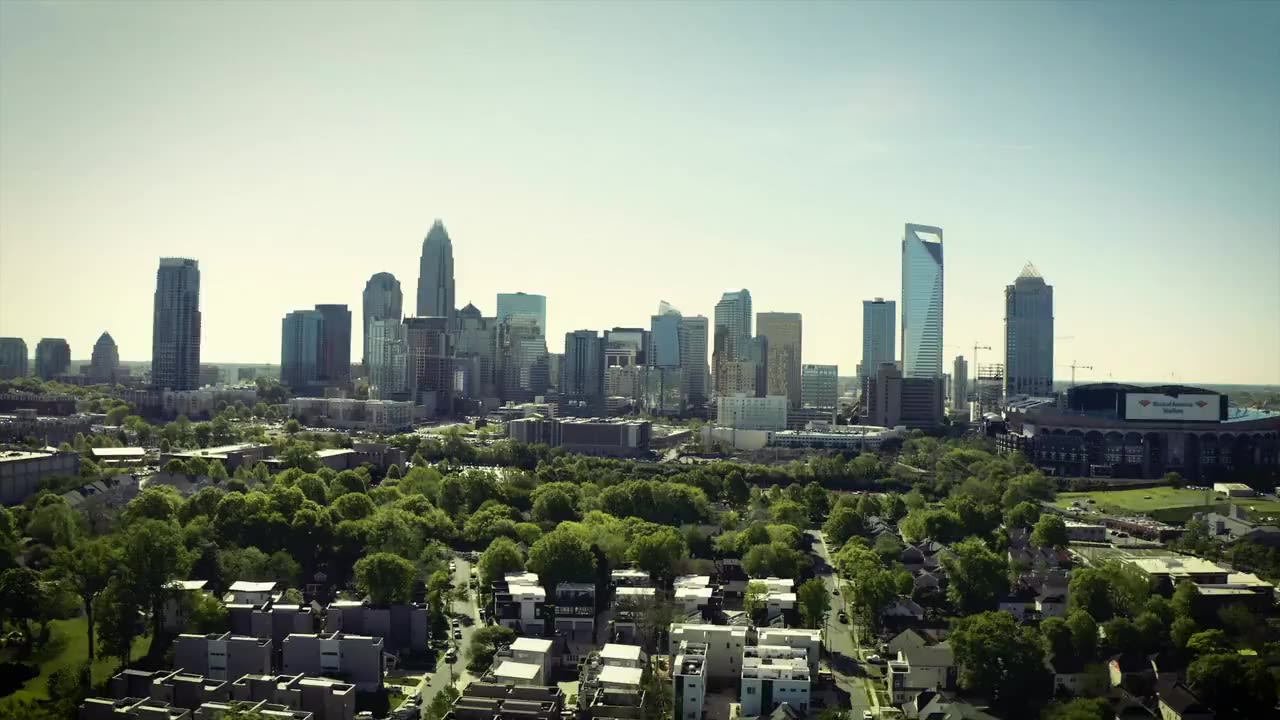
South Carolina, through the centuries, has acquired a reputation as a firebrand state whose legislators aren’t ones to shy away from a statutory scuffle. Much of that seems to stem from the fact that South Carolina was the first state to secede from the federal Union in 1860. These days though, you’re far more likely to encounter creative arts and verdant public spaces in the state’s capital and legislative hub, Columbia.
Columbia's capital status means it has some of the state’s finest historic artefacts and fine art institutions. Overlooking the Congaree River, South Carolina State Museum’s collection spans a vast range of interests, from centuries-old weaponry made in the state, via dinosaur fossils to a universe-scanning modern planetarium.
The Columbia Museum of Art’s permanent collection includes works by Renaissance masters such as Tintoretto and the Impressionist pioneer Claude Monet, alongside temporary exhibitions.
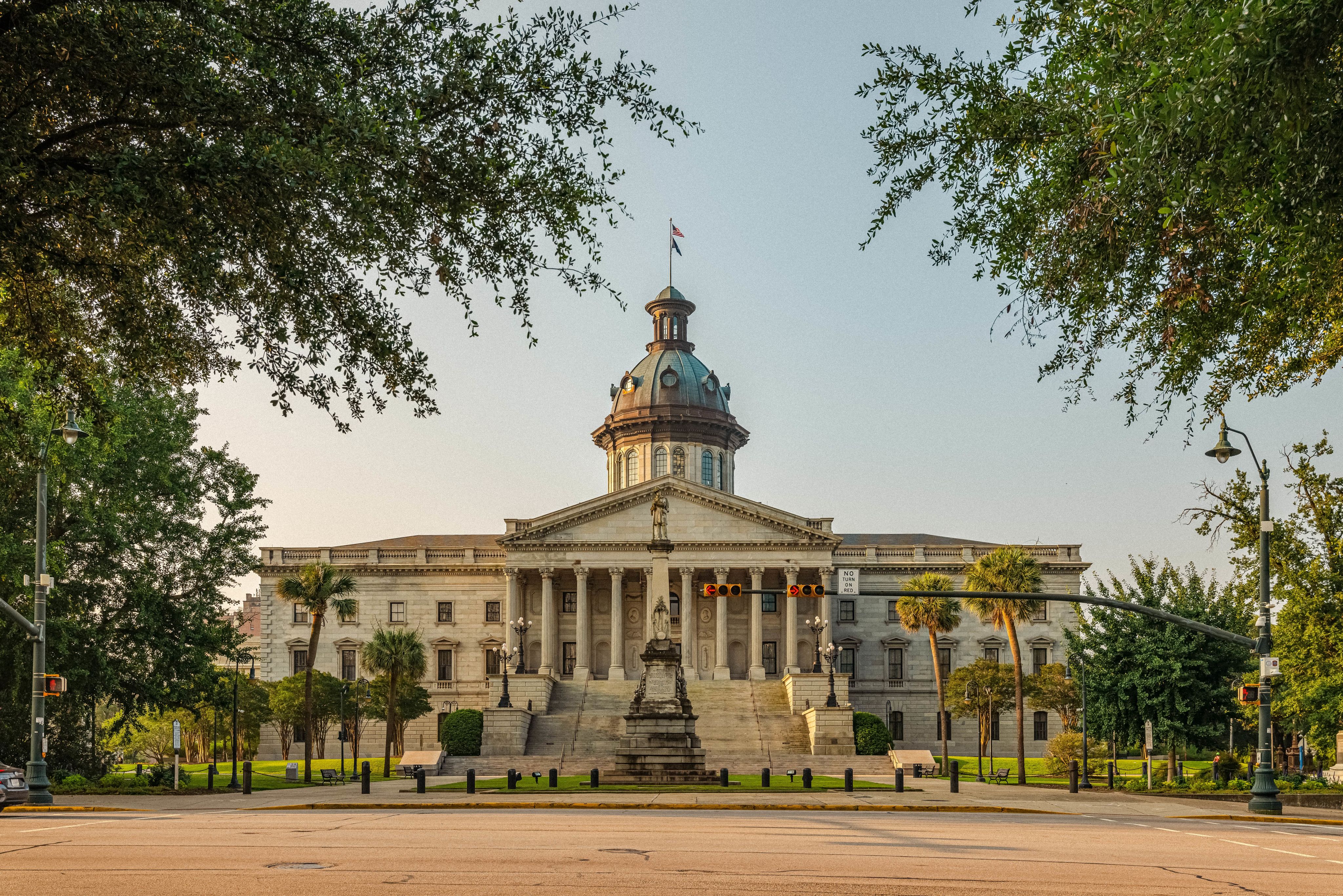
Four blocks south along Main St is the dome-capped South Carolina State House. Tours are available in the late morning and early afternoon from Monday to Saturday. This seat of government lies adjacent to the sprawling University of South Carolina campus. USC was established in 1801, in Columbia’s early years.
Columbia also offers plenty of outdoors activities. Sitting at the confluence of the Saluda and Broad rivers, which form the Congaree River, companies such as Palmetto Outdoor offer canoe hire, along with tubing trips along the river.
If you’d prefer to stay dry, hike or bike trails such as the Three Rivers Greenway, past the old pump houses of Columbia Canal and Riverfront Park.
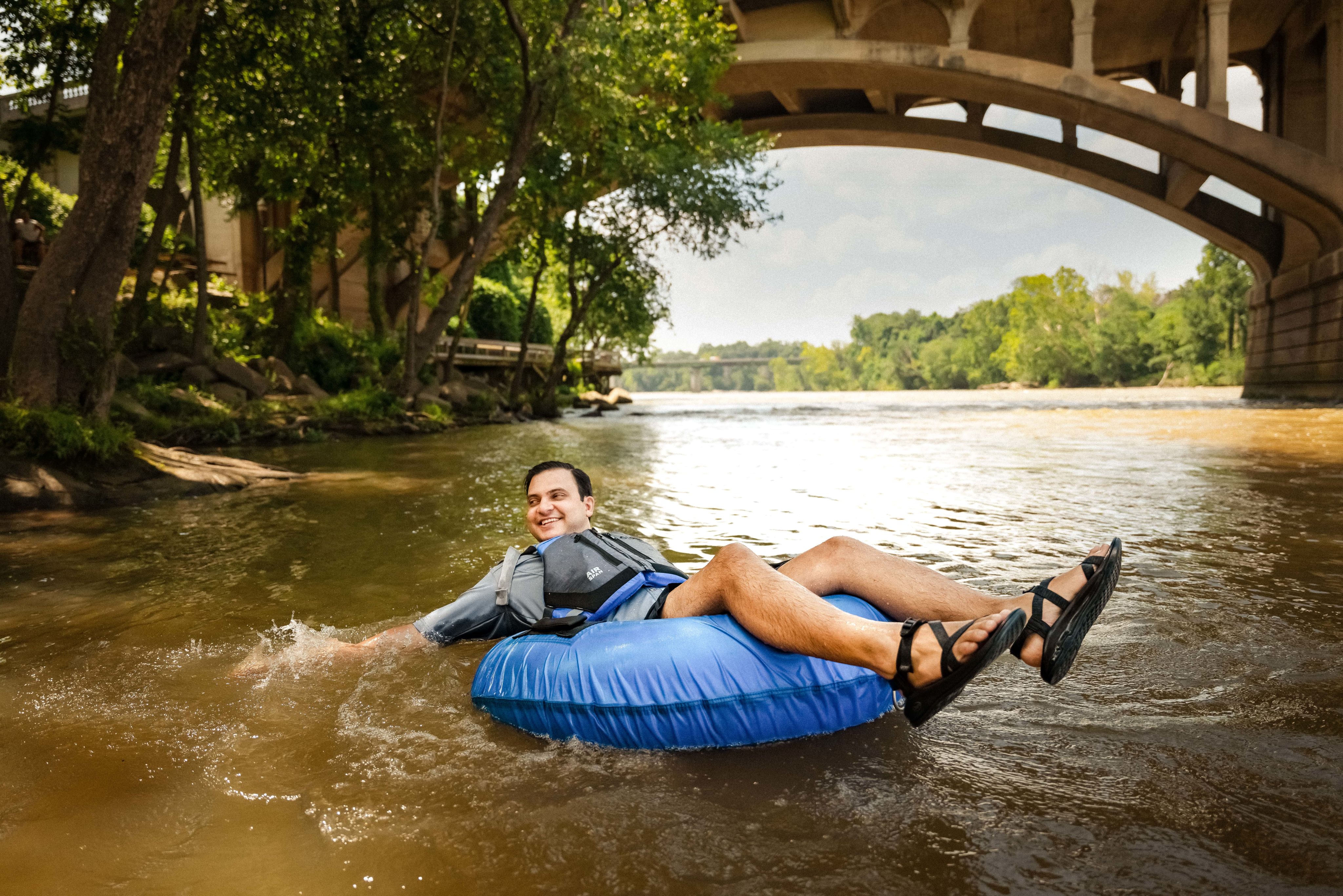
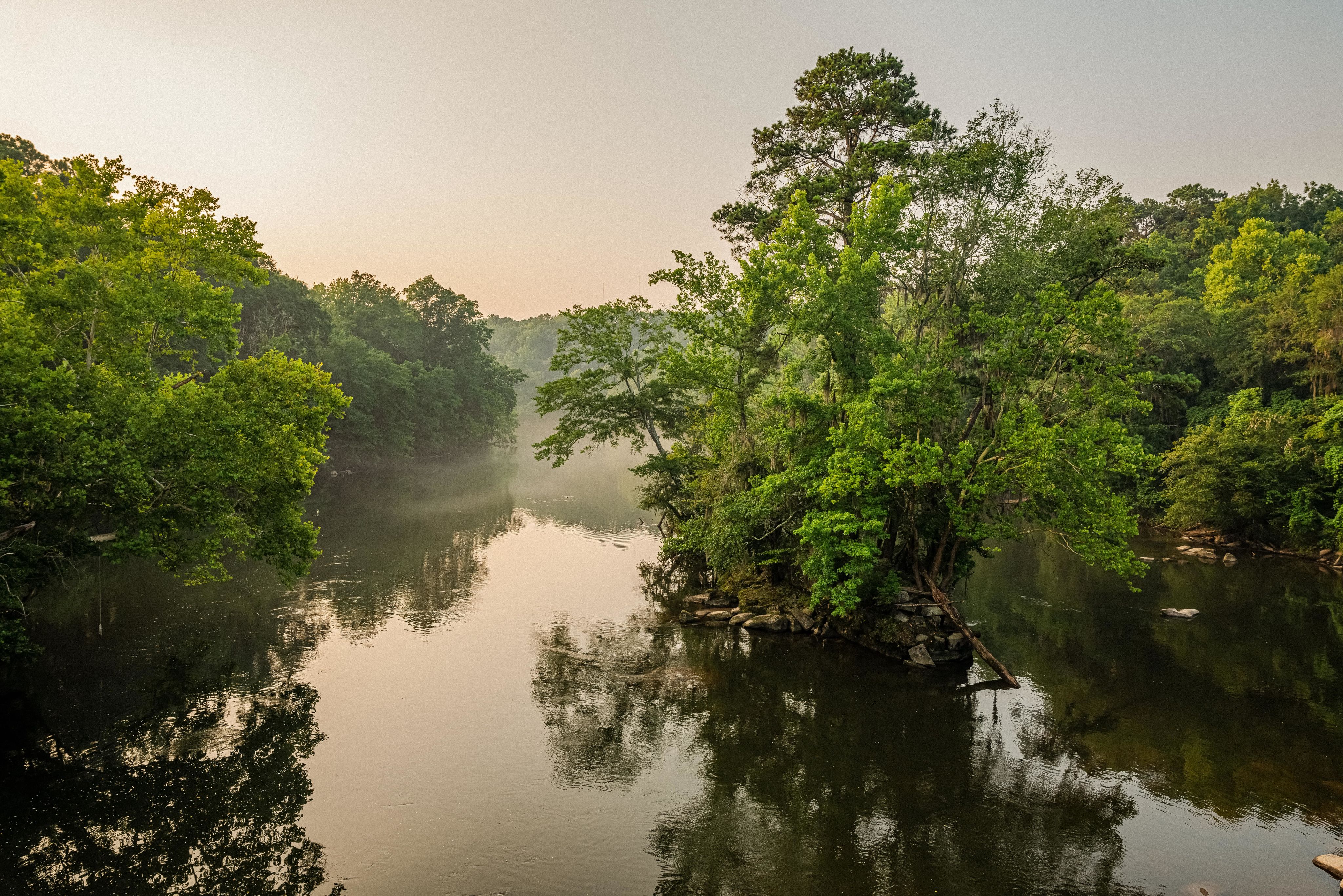
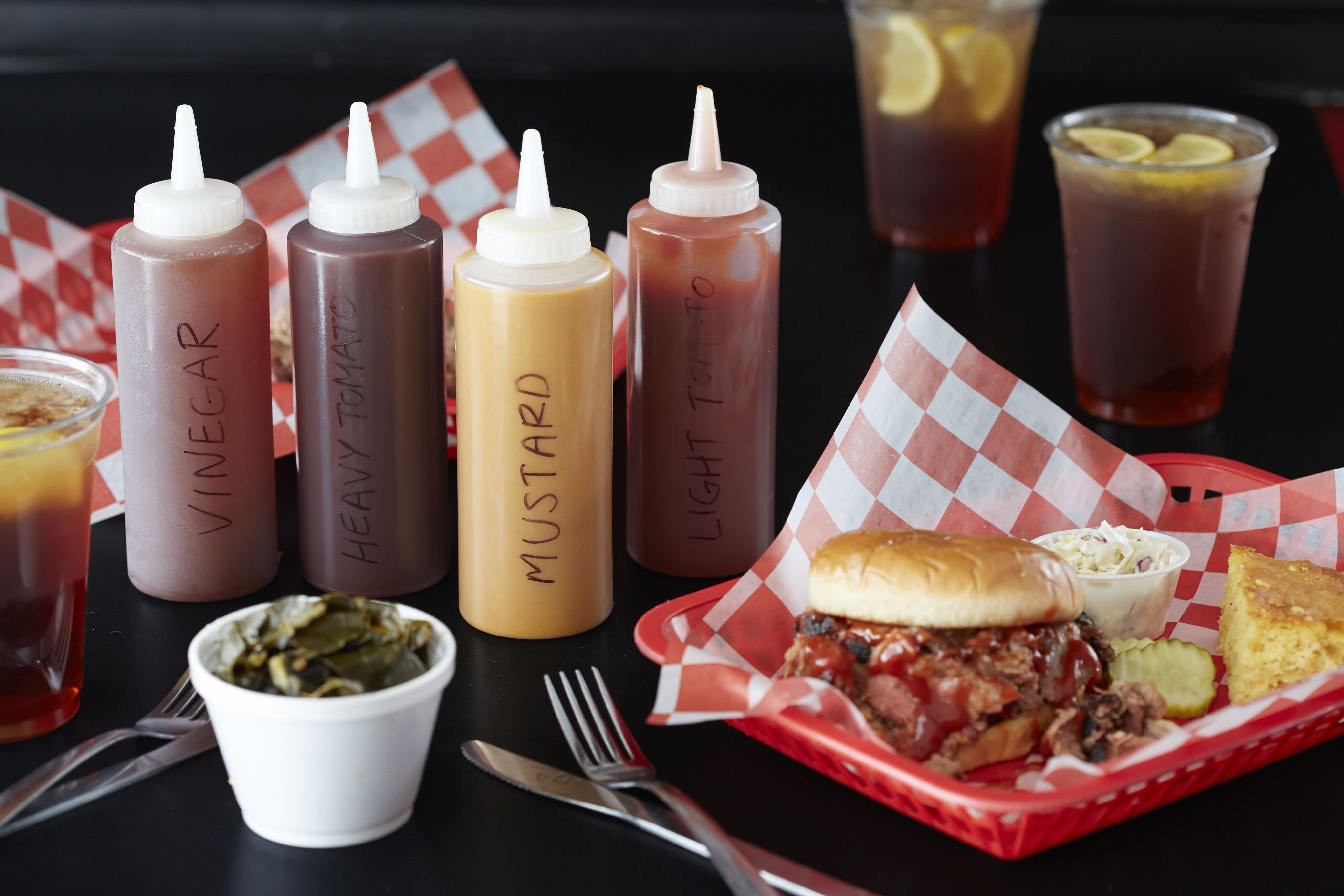
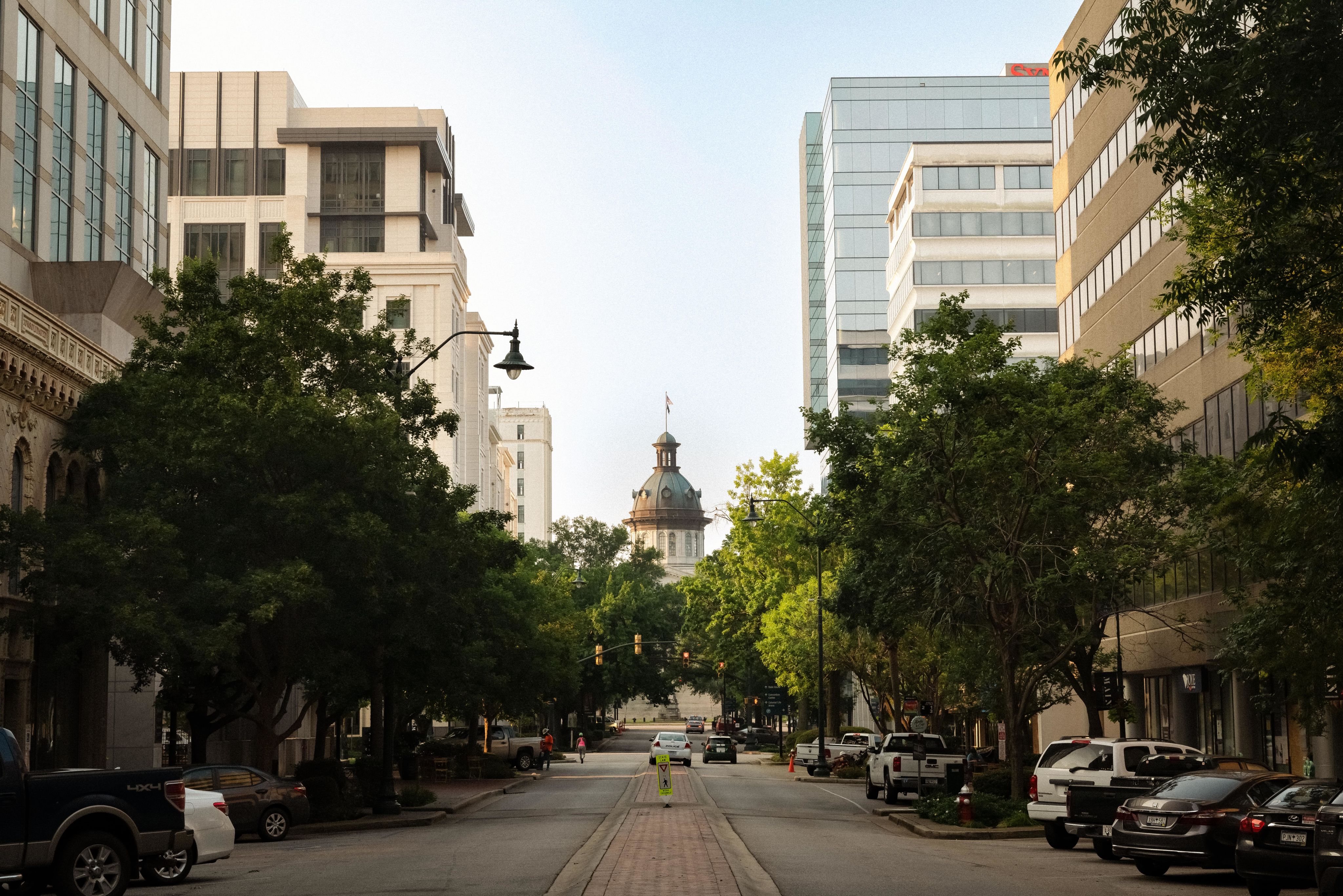
A breath of fresh air
Thirty-minutes south by car, Congaree National Park is South Carolina’s only land with federal protection due to its natural value. Congaree’s huge trees are the main attraction, with lofty specimens of loblolly pines, cypresses and cotton gums (aka water tupelo), all of which are among the tallest of their species anywhere in the world.
Crucially, the park protects the largest remaining region of old-growth bottomland hardwood forest in the eastern United States. The best ways to get close, without negatively impacting the environment, are via the 4.1km Boardwalk Trail and by canoe.
Where to eat
Columbia also lies at the heart of the South Carolina barbecue trail. And when the word barbecue crops up in the state, expect nothing but pork, pulled and pit roasted, and slathered in one of the state’s unique sauces.
The best-loved in Columbia, thanks to the influence of the region’s German settlers, is Carolina mustard sauce (aka Carolina gold). You’re also likely to find vinegar sauce at most barbecue restaurants around the city, which is thought to be among the first barbecue sauces developed in the country.
To sample these delectable styles for yourself, seek out Palmetto Pig, Doc's Barbeque, or the Midwood Smokehouse on Cross Hill Rd. On Saturday, stop by one of the food trucks at Soda City Market or tuck into delicious vegan comfort food at A Peace of Soul Vegan Kitchen.
Where to stay
For an elegant stay in a landmark building, try Sheraton Columbia Downtown Hotel just a stone's throw from Main Street. Also Downtown, Hotel Trundle combines a bare-brick aesthetic with modern furnishings. Beer lovers can try the hotel’s own locally brewed beer served from a tap behind the reception desk.
Soak up the beauty of Beaufort
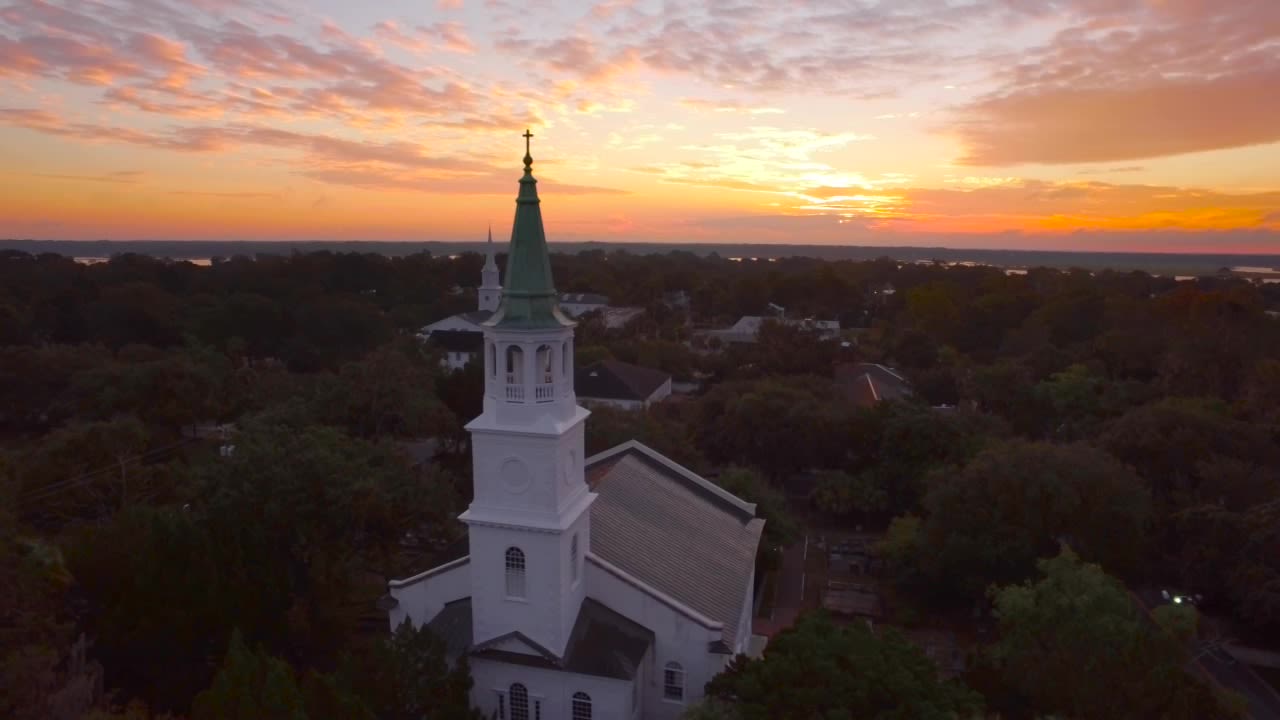
Many international visitors to South Carolina aren't aware they can venture beyond the family resort attractions of Myrtle Beach or the Spanish moss-draped historic district of Charleston. Continue south along the coast however, through the swampy marshland and subtropical groves of palmetto trees (which lend South Carolina its nickname ‘The Palmetto State’), and you'll reach charming Beaufort (pronounced 'byew-fert').
Boasting many of its big sister Charleston’s top qualities (elegant manor houses, trees dripping in Spanish moss, and waterfront promenades), the most unique aspect of Beaufort is its Gullah culture. When the indigo and cotton plantation owners fled the Union army's advance at the start of the Civil War, the enslaved people were able to escape to nearby sea islands such as St Helena. Geographically secluded, this African American group’s ancestral cultures and customs endured, evolving into Gullah, along with their own unique Patois dialect.
To discover the Gullah culture and history, take a two-hour tour with Gullah-N-Geechie Mahn on St Helena Island. Come in late May to catch the annual Original Gullah Festival.
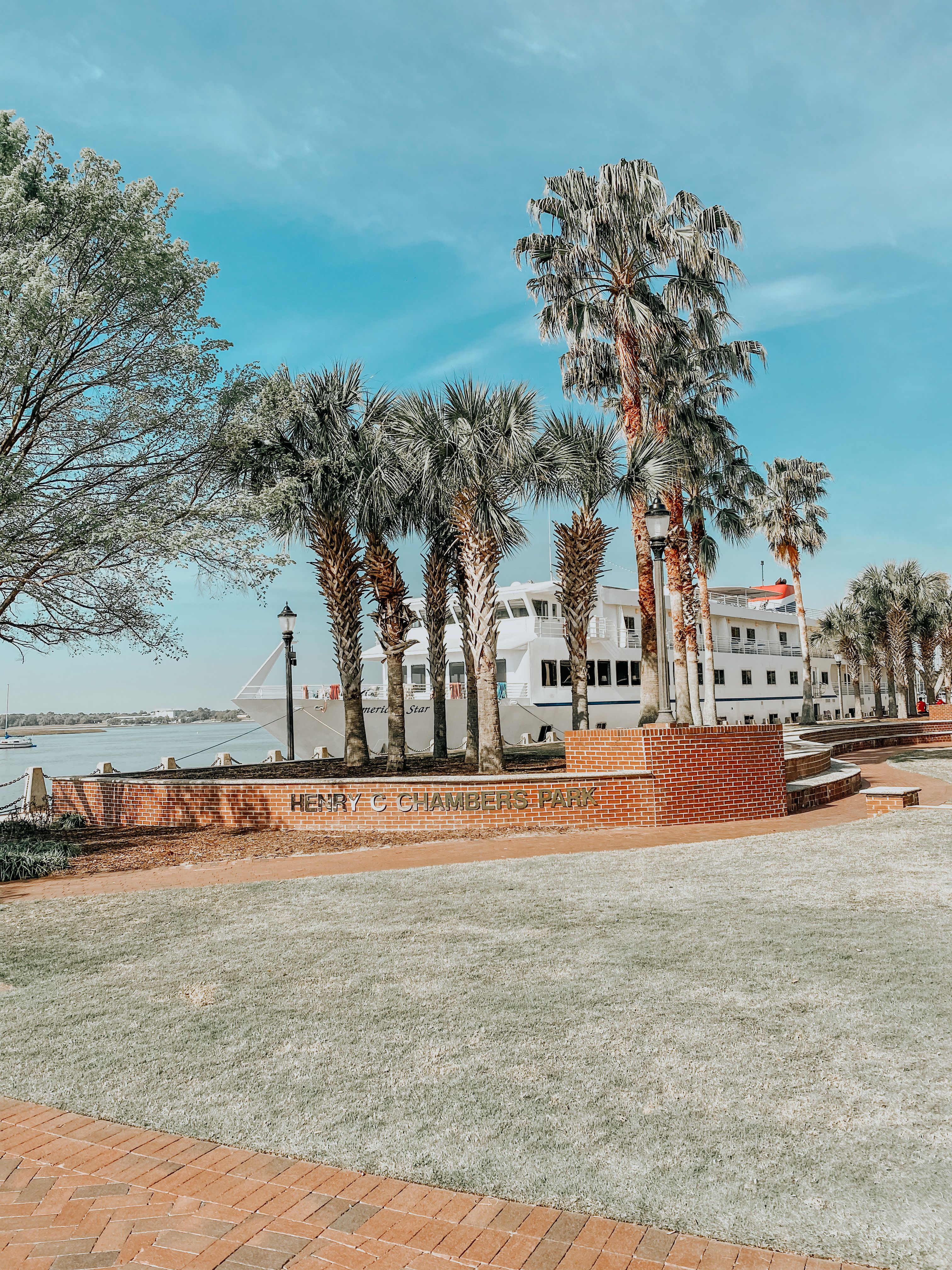
In town, Robert Smalls House is a beautiful example of Southern architecture, with its two-storey porch. It belonged to African-American Robert Smalls, a formerly enslaved person who rose to become a congressman in the U.S. House of Representatives.
Beaufort History Museum is housed within another important old structure: the city’s banana-yellow former arsenal. Exhibits focus on the the role the city played in the American Civil War.
South Carolina’s secession from the Union, which effectively started the war, was plotted at a prominent home nearby. You can still see Secession House, as it is now known, three blocks west of the museum.
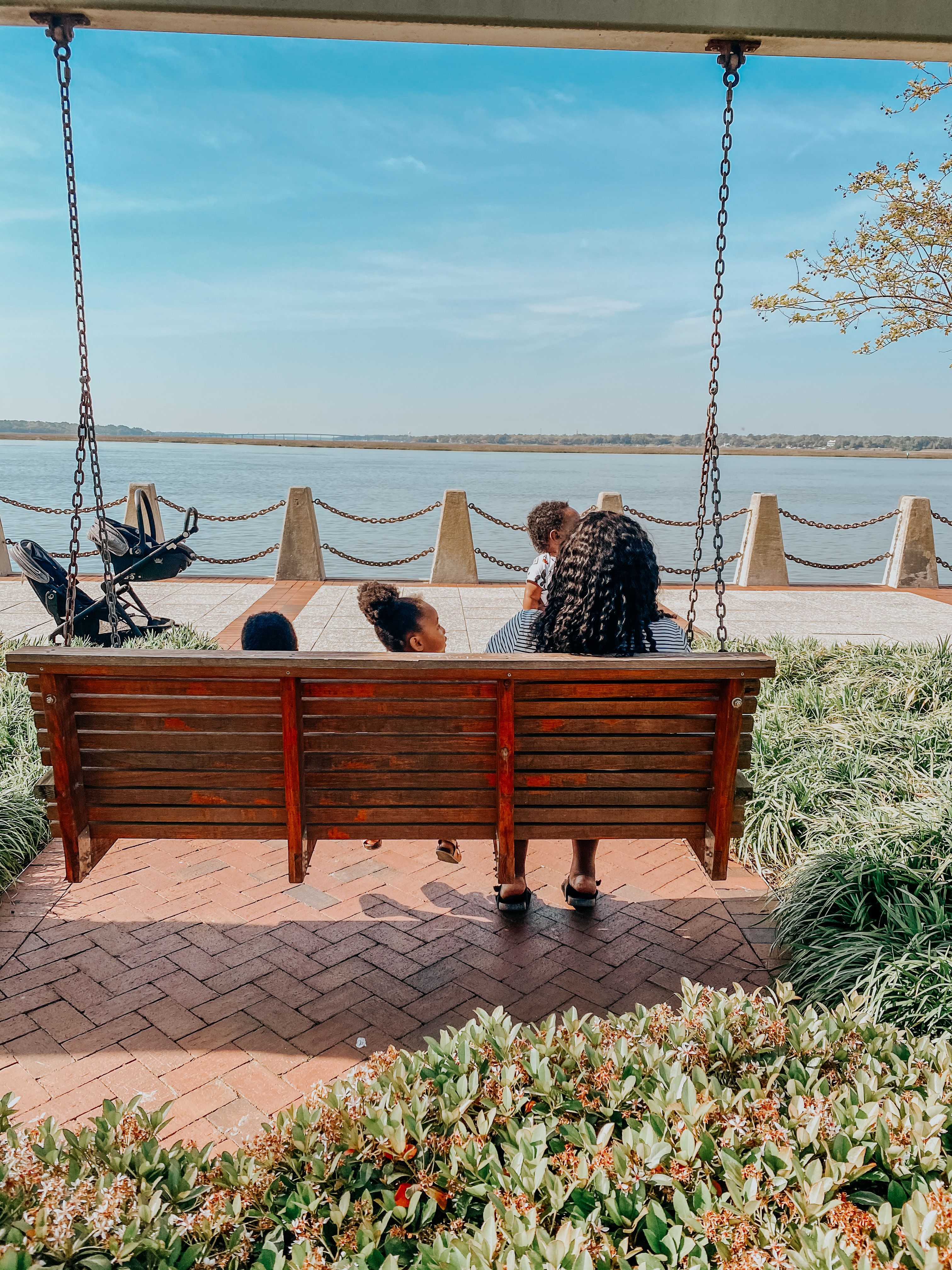
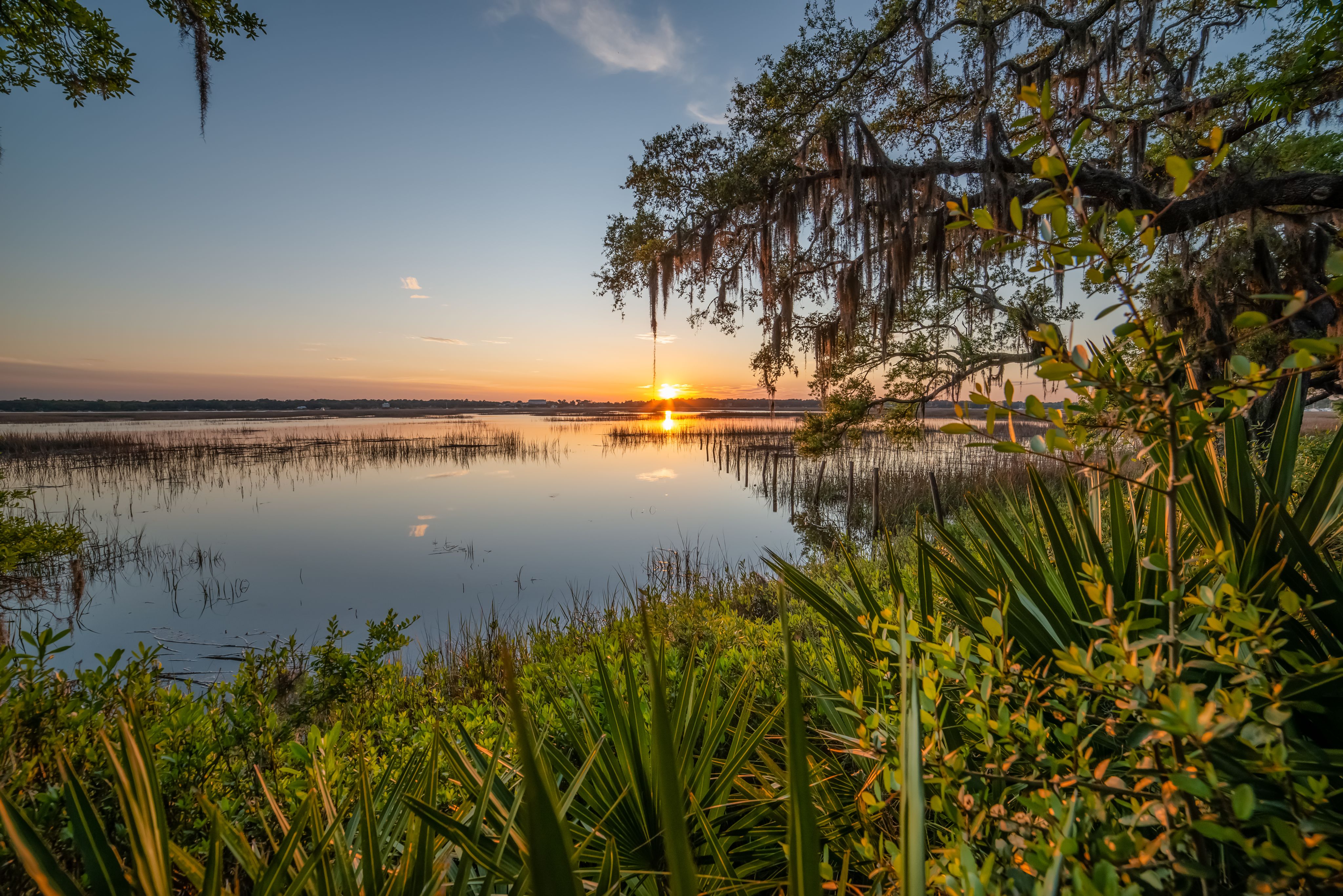
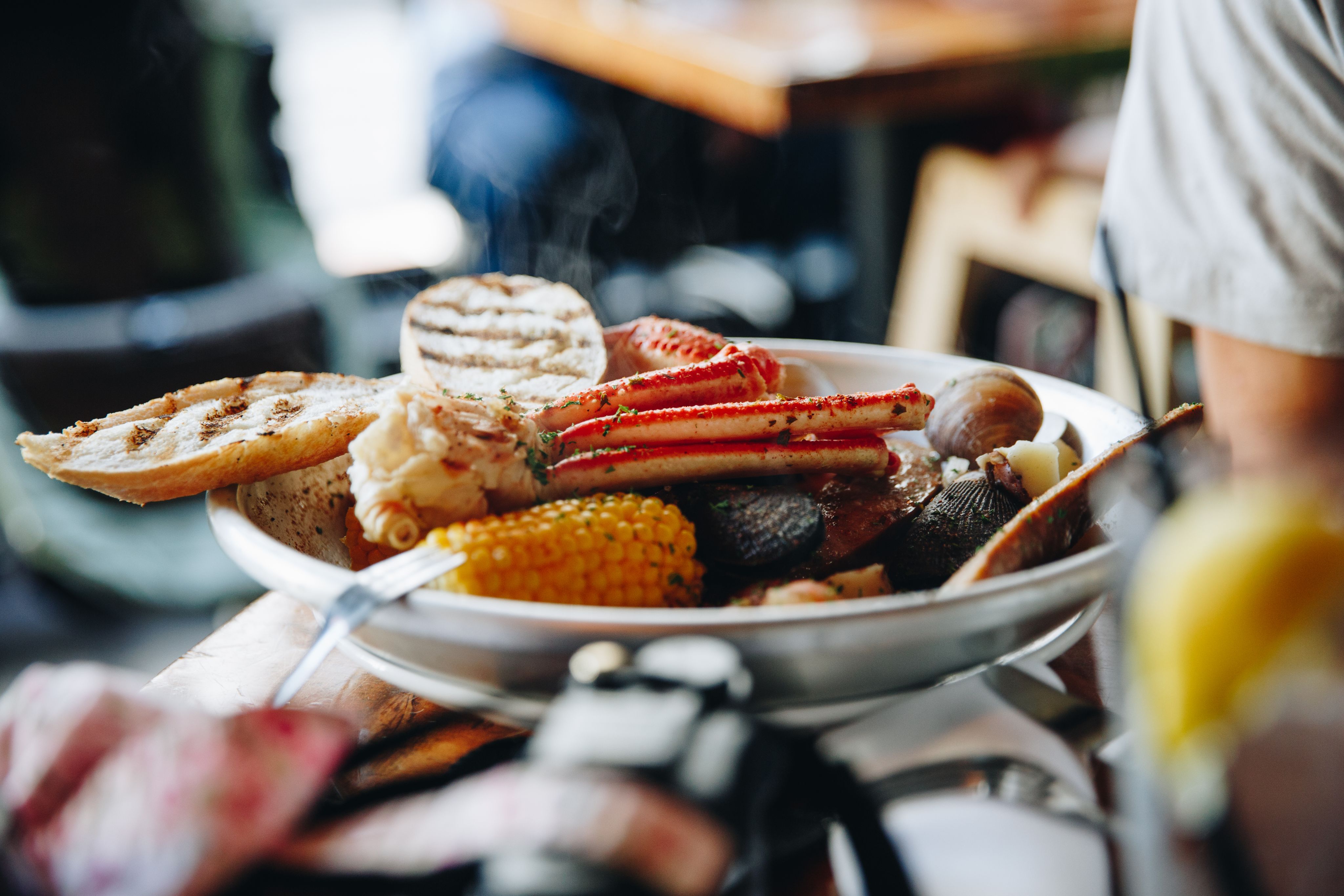
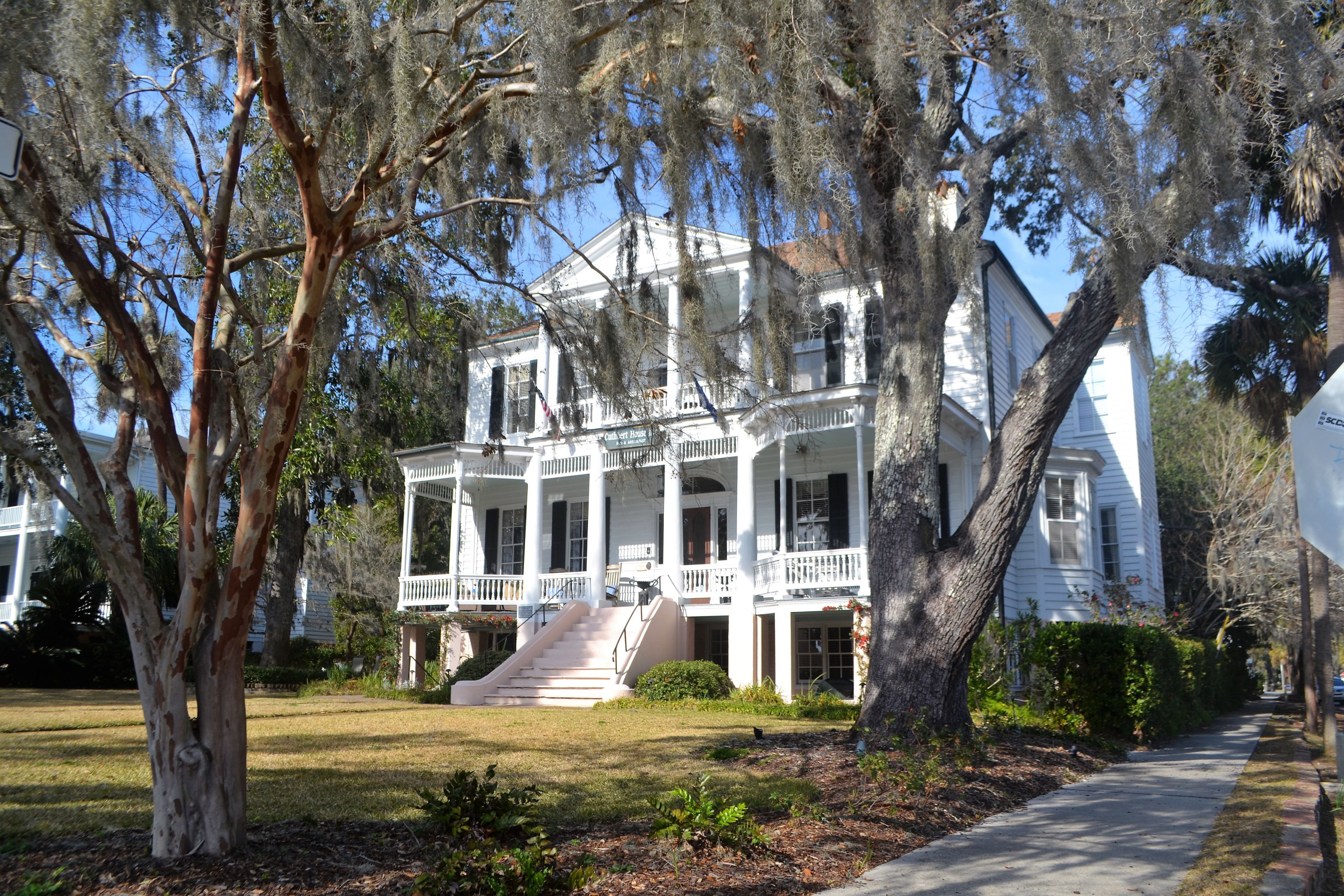
Head out on the water
With much of the town surrounded by water, Beaufort became a key Union Army base during the Civil War. Today you can take nature-spotting boat tours or paddle out into the wetlands in a kayak with Coastal Expeditions Beaufort. A stroll along the Henry C. Chambers Waterfront Park is particularly pretty at sunset.
Where to eat
Carriage rides and golfcart tours depart from the corner of Charles and Bay streets, making an ideal way to take in Beaufort’s heritage-laden streets. It’s this lovingly preserved past that attracts Hollywood to Beaufort. Forrest Gump was filmed around the pretty little city and fiction meets fact at the myriad seafood restaurants serving up heaped platters of shrimp, including Saltus River Grill and Blackstone’s Café, which opens for breakfast and lunch only.
Gullah Grub Restaurant on St Helena Island is the place to go for authentic soul food. Johnson Creek Tavern, 24km east of Beaufort, does great oysters at a quirky wooden diner plastered in signed dollar bills.
Where to stay
Many visitors to South Carolina spend time marvelling at the whitewashed pre-Civil War mansions, but in Beaufort, you can actually stay in one. Built in 1790, Cuthbert House’s luxury rooms have four-poster beds and a porch overlooking the water.
Another fine option nearby is the locally-owned B&B, Rhett House Inn.
Feeling inspired?
Start planning how you’ll explore the road less travelled in South Carolina.
